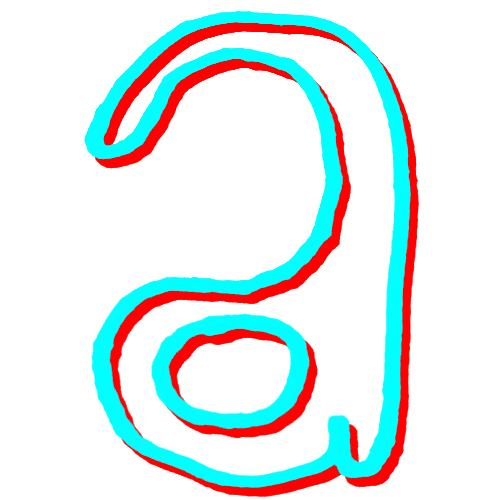The poem beside itself: co-occurrence in Leslie Scalapino’s “Friendship”
—as the white blossoming tree: as it isn’t occurring ‘isolated’ ‘one’
arriving white ‘blossoming’ tree as one ‘only’ [1]
***
that of no ground (on which one walks)—with huge ravens, cawing— from one’s side—in blossoming trees only. [2]
***
—from one’s side—in blossoming trees only everywhere only [3]
***
there’s
no relation to ones eyes— [4]
As “no relation” [5] becomes a relation. As “the white blossoming tree: as it isn’t occurring” becomes an occurrence. Cole Swensen remarks that “the conjunction of the referential and the performative—the point at which reference and action, representation and presentation, begin to fuse—is the most promising site for an expansion of language into previously inarticulable territory.” [6] Conjunction feels like one way the blossoming tree occurs even as it isn’t. Through the “conjunction,” or the “coexistence,” of the blossoming tree’s referential and performative qualities a “different space occurs” [7]—not necessarily as a location between referential language and performative language but perhaps a “dislocation” [8] existing alongside. The blossoming tree which is “referred to” (as it isn’t occurring) coexists with its “presentation” (its occurrence) in language, creating the experience of “beside.” [9] The poem beside itself. Or the poem as besideness itself. I feel I’m in a slingshot, [10] moving horizontally, stretching out along the horizon which holds me down. [11] Eve Kosofsky Sedgwick discusses besideness as an “irreducibly spatial positionality” which destabilizes hierarchical and oppositional spatial positions such as “beneath,” “beyond,” and “behind,” as well as the dualistic thinking of “noncontradiction,” “cause versus effect,” and “subject versus object.” [12] I’d like to explore the besideness and dislocation caused by co-occurrence in Scalapino’s Friendship, not only as situations of the poem, but as relations having to do with friendship—with friendship as “a proximity that resists both representation and conceptualization.” [13]
How to begin traversing the poem’s “dislocations”? One way the poem inhabits dislocation is through making itself “out of place.” [14] Or, perhaps more precisely, disrupting an anticipated notion of what “place” might feel like by enacting “no ground (on which one walks).” [15] This kind of dislocation in the poem is, at least in part, due to its use of prepositions (a mode established by the poem’s opening gesture towards the friend: “for Lyn Hejinian”). Throughout the poem, prepositional fragments are held by a “mind investigating spatially” [16]:
that of no ground (on which one walks)—with huge ravens, cawing— from one’s side—in blossoming trees only. [17]
Do we like what we have? [18] How did we expect the line to occur? Did we anticipate an advancement of thought? The poem does not accommodate this expectation. Instead, the line “fractures” or “shifts from its former place” [19] and becomes suspended in the action of continually changing proximity. The line begins with “that of no ground (on which one walks)” and begins again “with huge ravens, cawing” and begins again “from one’s side” and begins again “in blossoming trees only.” The movement from one prepositional fragment to another— shifting from “with” to “from” to “in”—creates the sensation of vicinity without actually settling on a position within it. Proximity shifts endlessly. We walk on a ground that isn’t. The recurrence of dislocation is suspended in the line, and the absence of definitive proximity becomes a kind of proximity. What does it feel like to be unlocatable? It might feel like this (it might feel like friendship).
It also might feel like “everywhere only.” [20] Which is to say, as we read, events, images, places, proliferate without progression. They are “everywhere only”—not causally linked, not resolvable, but happening both “at the same time” [21] and “not at the same time” [22] (perhaps like the blossoming tree occurring as it isn’t occurring). Image and action, instead of being positioned as past or future, are “scattered and non-sequential.” [23] Everywhere happening beside everywhere happening:
“huge black ravens flying—in blossoms only—from one’s side—and black ducks which aren't flying have wild eyes on water [at the same time].” [24]
“Huge black ravens flying” occur beside “blossoms only” occur beside “one’s side” occur beside “black ducks which aren’t flying” occur beside “their wild eyes on water.” A horizontal expansion which does not progress anywhere. In other words, co-occurrence experienced spatially. Because progression isn’t the point. What is one’s point? Co-occurrence might be one. Existence alongside existence. The sensation of co-occurrence generated by the poem seems in conversation (existing alongside) Agamben’s discussion of “con-sentiment”—friendship as a “joint sensation” of the existence of the friend within existence itself. [25]
So dislocation can occur in part through co-occurring proximities. Through prepositional fragments happening “everywhere only.” Through their besideness. How else is dislocation created? It feels useful here to explore dislocation in relation to “separation” [26] and “distinction.” [27] Distinction might be felt as “the act of division” [28] in the poem, such as the division that seems to occur between the “black ducks which aren’t flying” and their “wild eyes on water,” the separation of “thorax” [29] and “rib cage” [30] from the rest of a body, and even the splitting of syntax itself, performed through em dashes which both dislocate and propel (I feel I’m in a slingshot).
“Distinctions” are also felt alongside repetition—such as, the recognizable differences (or the feeling of being nearly recognizable) between one repeated word or image in the poem and its other occurrences (i.e. “blossoming trees everywhere”). Or attempting to discern the poem’s use of “one” as pronoun from “one” as noun which, through the activity of discernment (and the potential error of mistaking one instance for the other), allows both meanings to happen at the same time. Or the doubletake in the space between the “huge black ravens flying” and the “black ducks which aren’t flying.” In this way, layers of distinction in Friendship might resemble Stein’s “mingle everywhere” [31]: something like “blue clouds. In a blue sky.” [32] The poem makes a “distinction” by specifying that the blossoming tree arrives as “one ‘only.’” [33] At the same time, the poem blurs distinction with ambiguities like “horizontal lightning people” [34]—an indistinct visual repeated in moments such as “people lines crawling on cliff” [35] and “people as lines crawling carrying.” [36] That people can be both distinct and indistinct from lightning on a cliff, or lines of lightning, might be another kind of co-occurrence. Moving alongside a seeming opposition (distinct vs. indistinct), the poem finds its way around such opposition (dislocates from it).
The co-occurrence of distinct and indistinct becomes another dislocation of the poem. An indefinite space of nearly legible. Or the movement alongside it. The position of being distinct is not prioritized over that which is indistinct. They co-occur. Which returns us to the poem’s “besideness” as a consideration of friendship—friendship which is perhaps recognizable by also being unrecognizable. Or, as Agamben puts it, “to recognize someone as a friend means not being able to recognize him as ‘something.’” [37] Perhaps friendship is another dislocation of co-occurrence. Friendship beside itself or friendship as besideness itself.
Works Cited
Agamben, Giorgio, David Kishik, and Stefan Pedatella. “The Friend.” Essay. In “what Is an Apparatus?” And Other Essays. Stanford, CA: Stanford University Press, 2020.
Clevidence, Cody-Rose. “A Night of Dark Trees.” Essay. In Aux/Arc Trypt Ich. New York: Nightboat Books, 2021.
Howe, Fanny. “Bewilderment .” HOW2. Accessed May 13, 2023. https://www.asu.edu/pipercwcenter/how2journal/archive/online_archive/v1_1_1999/fhbewild.html.
Scalapino, Leslie. “Friendship.” Essay. In The Public World/Syntactically Impermanence. Middletown, CT: Wesleyan University Press, 1999.
Sedgwick, Eve Kosofsky. Touching feeling: Affect, pedagogy, Performativity. Durham, NC: Duke University Press, 2006.
Stein, Gertrude. “Before the Flowers of Friendship Faded Friendship Faded.” Essay. In Look at Me Now and Here I Am. Harmondsworth, Eng.: Penguin Books, 1990.
Stein, Gertrude. “Winning His Way.” Essay. In Stanzas in Meditation and Other Poems (1929-1933). New York, NY: Books for Libr. Pr, 1969.
Swensen, Cole. “Against the Limits of Language,.” Essay. In Noise That Stays Noise: Essays. Ann Arbor: University of Michigan Press, 2011.
See here for a complete list of notes.


